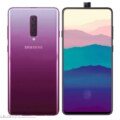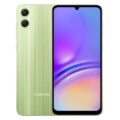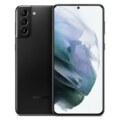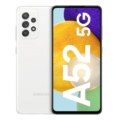- DroidAfrica
- Gadgets
- Samsung
- Samsung Galaxy A50s
Samsung Galaxy A50s

Samsung Galaxy A50s Highlights and Overview
The Samsung Galaxy 50s is a feature packed mid-range smartphone with a huge 6.4-inch AMOLED display and 1080 x 2340 pixels resolution, with Waterdrop notch above the screen. The Galaxy A50s is the upgraded version of the A50. The obvious upgrade however, is in the camera department, which is the use of a 48-megapixel sensor as the main sensor in the triple rear camera setup, instead of the 25-megapixel sensor used in the standard Galaxy A50.
Specification wise, the device is powered by the latest Exynos 9810 Octa-core CPU clocked at 2.3GHz, integrated with Mali-G72 MP3. It has both 4/6 GB RAM and 32/64 GB expandable storage versions.
The aforementioned triple rear camera is a combination of a 48 MP main sensor, an 8 MP ultra-wide angle lense, and a 5 MP depth sensor, featuring PDAF, f/2.0 aperture and a single LED flash. At the front, there’s yet another large 32-megapixel front-facing camera for selfie and video chats.
The device retains same 4000mAh built-in battery, with 15W fast charging features as seen on the Galaxy A30, and also supports USB Type-C interface, and Android 9.0 (Pie) out of the box. Other key specifications and silent features of the Samsung Galaxy A50s are contained in the table below.
Samsung Galaxy A50s Full Specifications and Features
NETWORK
| Technology | GSM / CDMA / HSPA / LTE |
| 2G Network Bands | GSM 850 / 900 / 1800 / 1900 - SIM 1 & SIM 2 (dual-SIM only) |
| 3G Network Bands | HSDPA 850 / 900 / 1900 / 2100 |
| 4G Network Bands | LTE band 1(2100), 2(1900), 3(1800), 5(850), 7(2600), 8(900), 20(800), 38(2600), 40(2300), 41(2500) |
| Speed | HSPA 42.2/5.76 Mbps, LTE Cat4 150/50 Mbps |
LAUNCH
| Also Known As |
- - |
BODY
| Dimensions | 158.5 x 74.7 x 7.7 mm (6.24 x 2.94 x 0.30 in) |
| Weight | 166 g (5.86 oz) |
| Build | Front glass, plastic body |
| SIM Type | Single SIM (Nano-SIM) or Dual SIM (Nano-SIM, dual stand-by) |
DISPLAY
| Display Type | Super AMOLED capacitive touchscreen, 16M colors |
| Size | 6.4 inches, 100.5 cm2 (~84.9% screen-to-body ratio) |
| Resolution | 1080 x 2340 pixels, 19.5:9 ratio (~403 ppi density) |
PLATFORM
| Operating System | Android 9.0 (Pie) One UI |
| Chipset | Samsung Exynos 9610 (10nm) |
| CPU | Octa-core (4x2.3 GHz Cortex-A73 & 4x1.7 GHz Cortex-A53) |
| GPU | Mali-G72 MP3 |
MEMORY
| RAM + ROM | 4/6 GB |
| Card Slot | microSD, up to 1 TB (dedicated slot) |
MAIN CAMERA
| Camera Type | Triple Lenses |
| Camera Sensor(s) | 48 MP + 8 MP + 5 MP Main camera |
| Camera Features |
Autofocus Face detection F/2.0 aperture LED Flash Panorama HDR 8 MP, f/2.2, 13mm ultra-wide sensor (second camera) 5 MP, f/2.2, 12mm (depth sensor) (third camera) |
| Video Resolution | 1080p@30/240fps |
SELFIE CAMERA
| Camera Type | Single Lens |
| Camera Sensor(s) | 32-megapixel |
| Camera Features |
F/2.0 aperture FaceID Face beautification HDR |
| Video Resolution | 1080p@30fps |
SOUND
| Loudspeaker | Yes |
| Speaker Location | Placed at the basement |
| Audio Jack Type | Yes, 3.5mm audio jack |
CONNECTIVITY
| Bluetooth | Bluetooth 5.0, A2DP, LE |
| NFC | |
| GPS | Yes, with A-GPS, GLONASS, GALILEO, BDS |
| FM Radio | FM radio |
BATTERY
| Battery Capacity | Non-removable Li-Po 4000 mAh battery |
| Wireless Charging | No |
| Talk Time Talk Time is the longest time that a single battery charge will last when you are constantly talking on the phone under perfect conditions, Ambient temperature and highly dependent on the cellular network environment such as the distance to the closest cell network tower. | Up to 33 hours |
| Stand-by | Up to 740 hours |
OTHER FEATURES
| Sensors | Fingerprint (side-mounted), accelerometer, proximity, compass |
| Box Contents | Charging Brick / USB cable |
Samsung Galaxy A50s User Reviews and Opinions
Disclaimer Note
We CANNOT guarantee 100% accuracy for the specification table above.












